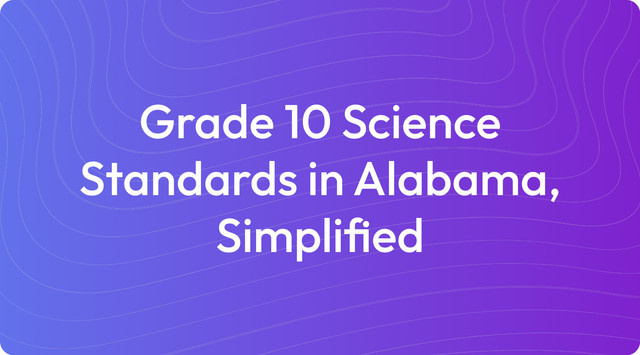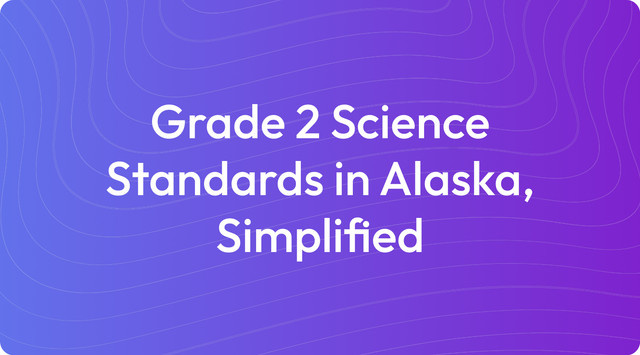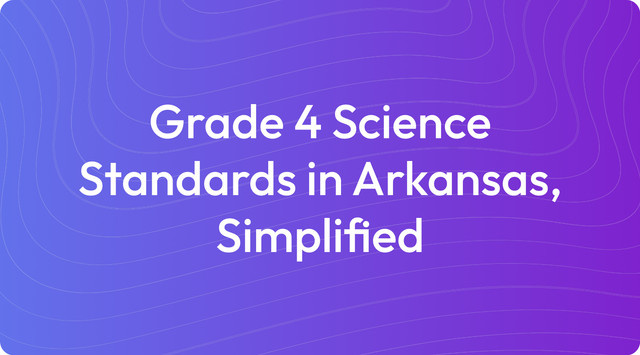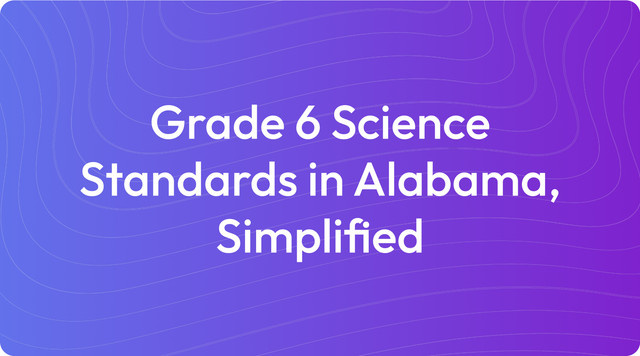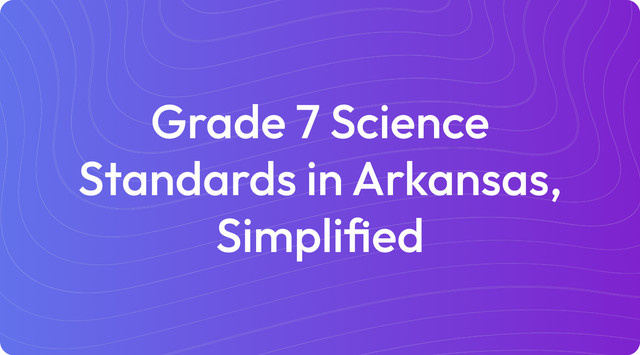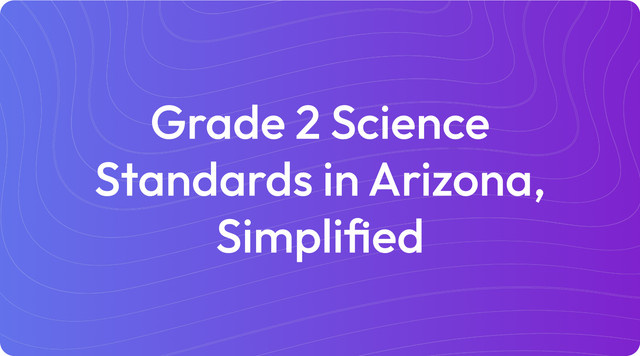Grade 3 Science Standards in Alaska, Simplified
Grade 3 science in Alaska focuses on forces, traits, weather, and ecosystem impacts. See the basics—read more on TeachShare!
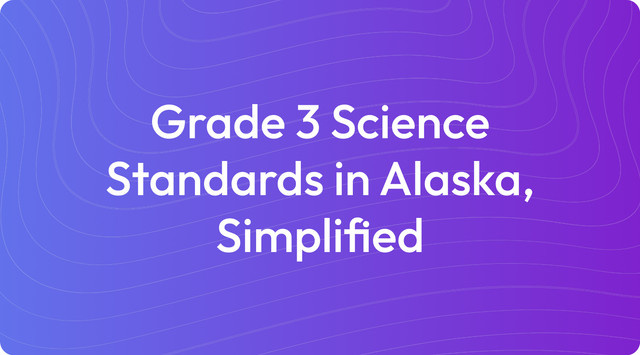
Creating effective lesson plans that align with state requirements can be a complex task. We understand the challenges you face in meeting educational standards while keeping students engaged. Our goal is to provide clear, practical resources to help you build your curriculum with confidence.
Education standards are learning goals that outline what students should know and be able to do at each grade level. For teachers, they provide a clear framework of expectations but do not dictate specific teaching methods, offering flexibility in how you design your lessons. For example, the Grade 3 Science Standards in Alaska require students to investigate forces and motion, and you can choose activities like pushing toy cars or rolling balls down a ramp to teach the concept.
What Are Grade 3 Science Standards in Alaska?
The Grade 3 Science Standards in Alaska, adapted from the Next Generation Science Standards (NGSS), focus on developing foundational skills in four key areas. These standards emphasize hands-on experimentation and real-world problem-solving, encouraging students to explore scientific concepts through Alaska’s unique environment and resources. The core standards for third grade are organized into the following domains:
1. Physical Science (PS): Forces and Motion
- Standard 3-PS2-1: Plan and conduct an investigation to provide evidence of the effects of balanced and unbalanced forces on the motion of an object.
- Standard 3-PS2-2: Make observations and measurements of an object’s motion to provide evidence that a pattern can be used to predict future motion.
- Standard 3-PS2-3: Ask questions to determine cause-and-effect relationships of electric or magnetic interactions between two objects not in contact with each other.
- Standard 3-PS2-4: Define a simple design problem that can be solved by applying scientific ideas about magnets.
2. Life Science (LS): Organisms and Their Environments
- Standard 3-LS1-1: Develop models to describe that organisms have unique and diverse life cycles, including birth, growth, reproduction, and death.
- Standard 3-LS2-1: Construct an argument that some animals form groups that help members survive.
- Standard 3-LS3-1: Analyze and interpret data to provide evidence that plants and animals inherit traits from their parents.
- Standard 3-LS3-2: Use evidence to support the explanation that traits can be influenced by the environment.
3. Earth and Space Science (ESS): Weather and Climate
- Standard 3-ESS2-1: Represent data in tables and graphical displays to describe typical weather conditions expected during a particular season.
- Standard 3-ESS2-2: Obtain and combine information to describe climates in different regions of the world.
- Standard 3-ESS3-1: Make a claim about the merit of a design solution that reduces the impacts of a weather-related hazard.
4. Engineering Design (ETS): Problem-Solving
- Standard 3-5-ETS1-1: Define a simple design problem reflecting a need or want, including criteria for success and constraints.
- Standard 3-5-ETS1-2: Generate and compare multiple solutions to a problem based on how well they meet the criteria and constraints.
- Standard 3-5-ETS1-3: Plan and conduct fair tests to improve a model or prototype.
Key Learning Goals for Grade 3 Science in Alaska
- Forces and Motion: Students learn how balanced and unbalanced forces affect motion and explore magnetism.
- Organism Traits and Life Cycles: Students investigate how plants and animals grow, inherit traits, and adapt to their environments.
- Weather and Climate: Students study seasonal weather patterns, climates around the world, and solutions to weather-related hazards.
- Engineering Design: Students define problems, design solutions, and test models to address real-world challenges using scientific principles.
- Connection to Alaska: Students explore local ecosystems, weather patterns, and species like salmon or wolves to make science relevant.
The framework for these standards is guided by the official Science Standards for Alaska, which are based on the NGSS topic arrangements.
Key Tested Standards
While state-level science assessments in Alaska begin in grade 5, the Grade 3 standards are essential for building a strong foundation and are often used for local assessments. These standards focus on foundational concepts in Physical Science, Life Science, Earth and Space Science, and Engineering Design. Below are the key standards that assess a student's ability to observe, investigate, and solve problems.
1. Physical Science (PS): Forces and Motion
- Standard 3-PS2-1: Plan and carry out an investigation that shows how balanced and unbalanced forces affect an object's motion.
- Standard 3-PS2-2: Observe and measure an object's movement to show that patterns can help predict its future motion.
- Standard 3-PS2-3: Ask questions to figure out the cause and effect of electrical or magnetic forces between two objects that are not touching.
- Standard 3-PS2-4: Define a simple problem that can be solved using scientific knowledge about magnets.
2. Life Science (LS): Organisms and Their Environments
- Standard 3-LS1-1: Create models that describe the unique and varied life cycles of organisms, from birth to death.
- Standard 3-LS2-1: Build an argument explaining that some animals live in groups to help each other survive.
- Standard 3-LS3-1: Analyze and understand data showing that plants and animals get their traits from their parents.
- Standard 3-LS3-2: Use evidence to explain that an organism's traits can be affected by its environment.
3. Earth and Space Science (ESS): Weather and Climate
- Standard 3-ESS2-1: Use tables and graphs to show and describe the typical weather for a specific season.
- Standard 3-ESS2-2: Find and use information from different sources to describe climates in various parts of the world.
- Standard 3-ESS3-1: Make a claim about how well a design solution works to lessen the impact of a weather-related danger.
4. Engineering Design (ETS): Problem-Solving
- Standard 3-5-ETS1-1: Define a simple design problem based on a need or want, making sure to include success criteria and limitations.
- Standard 3-5-ETS1-2: Come up with and compare several possible solutions to a problem, evaluating them against the set criteria and limits.
- Standard 3-5-ETS1-3: Plan and perform fair tests on a model or prototype to find ways to improve it.
This guide is based on information from the following sources:
Example Learning Objectives for Unit Planning
Learning objectives are clear, student-friendly statements that break down standards into manageable goals. They define what students should be able to do by the end of a lesson, helping you focus your instruction and assess understanding effectively. These "I can" statements empower students by making learning targets visible and achievable.
To help you plan your units, here are some example learning objectives for each of the Grade 3 Science domains:
Physical Science (PS): Forces and Motion
- I can investigate how pushing or pulling an object changes its motion and explain the difference between balanced and unbalanced forces.
- I can observe and measure how objects move and use patterns to predict future motion.
- I can explore how magnets attract or repel objects and explain how they work without touching.
- I can design and test a tool that uses magnets to solve a problem, like picking up paperclips.
Life Science (LS): Organisms and Their Environments
- I can describe the life cycle of a plant or animal, including birth, growth, reproduction, and death.
- I can explain how animals working in groups, like wolves or bees, help each other survive.
- I can compare traits of parents and their offspring, like fur color or flower shape.
- I can explain how the environment, like sunlight or temperature, can change the traits of plants or animals.
Earth and Space Science (ESS): Weather and Climate
- I can collect and organize weather data to describe seasonal patterns, like temperature, rain, or snow.
- I can compare the climate in Alaska to other parts of the world, such as deserts or rainforests.
- I can design a structure to protect against weather-related hazards, like strong winds or heavy snow, and explain why it works.
Engineering Design (ETS): Problem-Solving
- I can identify a problem and explain what needs to be done to solve it.
- I can design and test different solutions to a problem and compare how well each one works.
- I can improve my design by testing it, finding problems, and making changes to make it better.
Key Changes & Updates
The updated Grade 3 Science Standards in Alaska reflect a shift toward more interactive and practical learning. The new framework emphasizes inquiry-based methods and hands-on activities, encouraging students to move from passive observation to active exploration. A key update is the integration of engineering design practices directly into the curriculum. This means your students will not only learn scientific concepts but also apply them to define problems, create solutions, and test their own prototypes, building foundational skills through real-world challenges.
To make science more meaningful for students, the standards now connect learning to Alaska’s unique environment, with opportunities to study local ecosystems, weather patterns, and native species. There is also a greater focus on developing analytical skills, as students are expected to collect and interpret data, identify patterns, and explore cause-and-effect relationships. By integrating math and literacy for recording and communicating findings, these updates help you build well-rounded skills that prepare students for future scientific learning.
Create with TeachShare
We understand that aligning your curriculum with these detailed standards takes significant time and effort. Our platform is built to support you by simplifying the process of creating engaging, effective, and standards-aligned instructional materials. This gives you more time to focus on what you do best: teaching your students. Start creating standards-aligned instructional resources with TeachShare now.
Frequently Asked Questions
What are the main topics covered in Grade 3 Science in Alaska?
Grade 3 science in Alaska is built around four key areas:
- Physical Science: Exploring forces and motion, including pushes, pulls, and the behavior of magnets.
- Life Science: Investigating life cycles, inherited traits, and how plants and animals adapt to their surroundings.
- Earth Science: Studying weather patterns, different climates, and creating solutions for weather-related problems.
- Engineering Design: Learning to identify challenges, develop solutions, and test them to solve practical problems.
What makes the Alaska Grade 3 Science Standards unique?
The standards are specifically adapted for Alaska's students. Here’s what sets them apart:
- Local Relevance: The curriculum connects directly to Alaska’s distinct environment, from its climate to local species like salmon.
- Hands-On Learning: There is a strong focus on active investigation, where students learn by doing through experiments and building models.
- Practical Problem-Solving: Students are encouraged to tackle real-world challenges, like designing a structure to resist high winds.
What are some examples of hands-on activities for Grade 3 Science?
To help you bring these concepts to life, here are a few activity ideas:
- For Physical Science: Use toy cars and ramps to see how different pushes and pulls change an object's motion.
- For Life Science: Have students draw the life cycles of local animals, like salmon, and discuss how traits are passed from parents to their young.
- For Earth Science: Ask students to become meteorologists by tracking local weather, graphing the data, and designing a model shelter for heavy snow.
- For Engineering Design: Challenge students to build a simple tool with magnets to solve a problem, such as picking up paper clips from a hard-to-reach place.
How do these standards prepare students for future science learning?
The Grade 3 standards are designed to build a strong foundation for more advanced science topics. Here’s how:
- Motion and Forces: This work introduces core concepts that students will explore further in middle school physics.
- Traits and Life Cycles: It sets the stage for deeper learning in biology, including genetics and adaptation.
- Weather and Climate: Students develop early skills for analyzing Earth systems, which is crucial for later environmental science studies.
- Engineering Practices: By learning to design and problem-solve, students gain essential skills for future STEM-related fields.
How are students assessed in Grade 3 Science?
Assessment goes beyond traditional tests and focuses on what students can do. You can evaluate student understanding through a variety of methods, such as:
- Experiments and Investigations: Observing how students test ideas, like how a magnet’s force works or how a push affects an object’s movement.
- Models and Designs: Reviewing the diagrams, graphs, and prototypes students create to represent their learning.
- Data Interpretation: Checking their ability to record observations, make graphs, and find patterns in their data.
- Written Explanations: Reading their descriptions of how a scientific concept works or why their design is a good solution to a problem.
Answer


